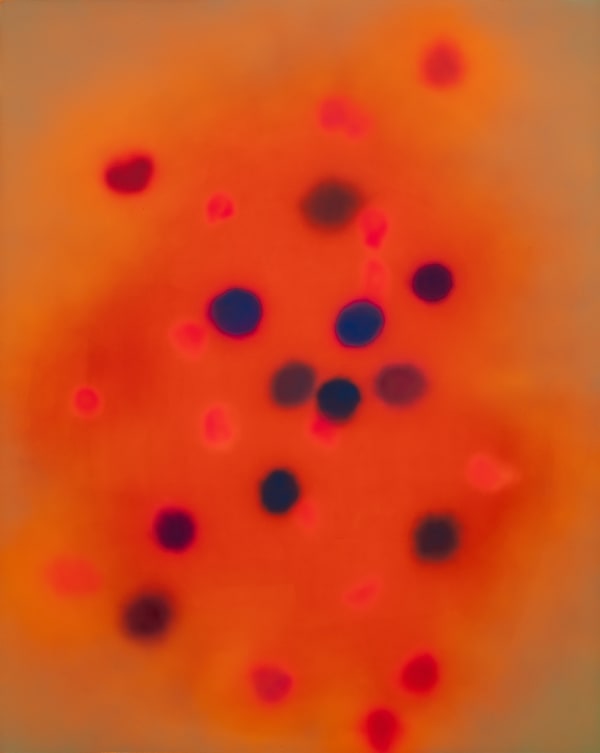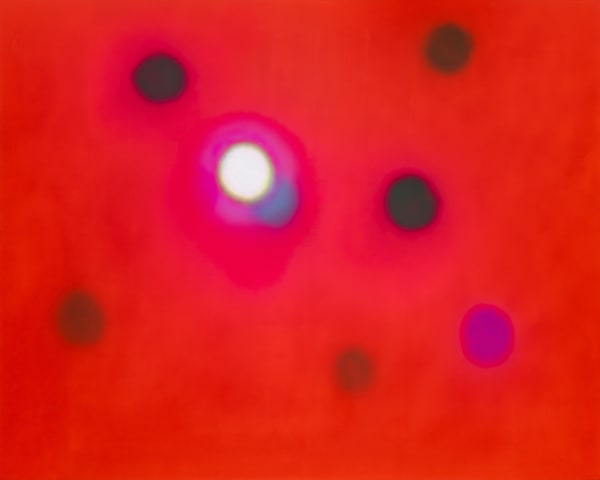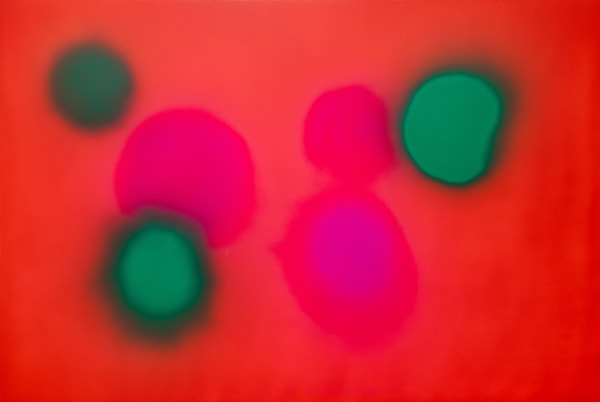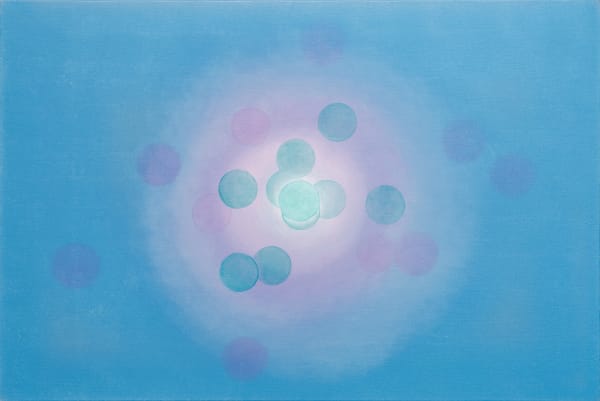Choi Ji Mok: The Light of Absence
Chapter II is pleased to announce The Light of Absence, a solo exhibition of Choi Ji Mok, from 23rd Jun to 5th August 2023 in Yeonnam-dong, Seoul. Choi, who has been challenging the conventional rectangular frame and entrenched formats through ‘readymade’ works, revisits the act of ‘seeing’ that initially intrigued him during his early days of studying in Germany. In this exhibition, he showcases subjective perceptions of light remnants and vibrant colors experienced since his residency at Chapter II Residency in 2022, translating them onto canvas as an alternative expression.
Choi Ji Mok (b.1981) received a BA in Painting from Suwon University and an MFA in Fine Art from the Muthesius Kunsthochschule. He held solo exhibitions at Kim Chong Yung Museum (2022), Kang Contemporary (2020), CAN Foundation (2019), Kunst & Co (2018) and Space O’NewWall (2017). He attended group exhibitions at multiple establishments, including Gallery Baton (2023), Chapter II (2022), Neue Kunst Initiative (2019), Holden Gallery (2018), Artspace Tetra (2017) and Korean Cultural Center (2017).
Artist Statement–‘The Light of Absence’ (2023)
This exhibition challenges the commonly held belief that “painting is a visual art.” The act of “seeing” a painting goes beyond the viewer and extends to the artist as well. The process of “seeing” a painting occurs within the structure of the retina, yet we often appreciate this art form without fully understanding its physiological mechanisms. What truly constitutes the act of seeing? This exhibition delves into the essence of “seeing” a painting.
This question and body of work trace back to my early studies in Germany in 2007. During that time, I embarked on a series of works exploring the after images of light as a means of perceiving a painting. My primary interest lay in understanding how objects are perceived through the sense of sight, encompassing various phenomena that can be experienced through the eyes. For instance, I delved into the visual phenomena of binocular vision, where objects may appear overlapping due to the gap between our eyes, the phenomenon of selectively focusing on a specific object while blurring the rest of the image, and various optical illusions that manifest under specific conditions. Additionally, I explored the intricate interplay between the eye and its visual mechanisms, such as the constant movement of the eye that refuses to remain still. All of these aspects became the subjects of my artistic exploration.
In particular, I closely observed and documented the afterimage effect. Although I was already familiar with afterimages from my studies, perceiving them as painterly objects was a profoundly different experience. It revealed the visual interplay between the retina and the nervous system, which ultimately gives rise to the sensation of "seeing" when they encounter the tangible physical world of light. This realization propelled me to a new level of understanding and awareness.
An afterimage emerges when one closes their eyes after directly gazing at the sun. It manifests in the darkness, gradually fading away over time. Afterimages represent the stimulation of our visual nerve bundles when our eyes are closed. Ordinarily, we rely on light to perceive our surroundings, to comprehend space and time. However, afterimages only manifest in darkness. Our physical senses tell us a different story. Even in the absence of light, with closed eyes, our eyes continue to see and perceive. The darkness we experience with our eyes shut is not merely an invisible realm; it is also a manifestation of our thoughts, unconscious imagination, and teems with latent visual phenomena and tangible abstractions. For instance, the negative afterimage—wherein the original image is replaced by its opposite color—glows in the darkness, revealing the "absence of light." It contradicts the theory that "light is the source of color," exhibiting colors contrary to the light source and transforming into a multitude of hues. These afterimages cannot be captured by photography or mechanical devices. Even an online search yields no relevant images. Furthermore, it is evident that disembodied artificial intelligence fails to grasp the nature of these afterimages within the nervous system.
In this body of work, I transfer the shapes and vivid colors of the afterimages perceived in darkness onto canvas. Throughout the history of painting, the medium has undergone significant changes and developments in response to the advent of photography in the 19th century. Today, with the advent of artificial intelligence, painting seems to stand on the precipice of another transformative moment. The age of machines has given me, as an organic being, the opportunity to once again wield the brush. The afterimage of light captured on canvas serves as a record of fleeting visual effects, moment by moment, and implies the joint creative and destructive providence of nature and the body. The title "The Light of Absence" emerged from these contemplations.
Methodologically, to depict an afterimage of the sun, one must gaze directly at it. To observe an independent afterimage, one must immediately close their eyes after gazing at the sun and then remember and document the shapes and colors perceived in the ensuing darkness. The duration of the afterimage correlates with the time spent gazing at the light. This process can strain the eyes, and it is challenging to rapidly capture and record the ever-changing afterimages. Additionally, the sensation of light when the eyes are closed can vary slightly from person to person. Even the identification of colors based on learned criteria remains subjective, as it cannot be objectively verified. There is also a methodological limitation of relying on memory to capture transient effects. To mitigate these constraints, I worked outdoors, directly gazing at the sun, and utilized an iPad for quick recording and infinite editing.
In truth, capturing the sensation of an afterimage in the materials of painting is nearly impossible. It is akin to a hyper-realistic painting of a radiant sun that fails to dazzle the eyes. To overcome the reproductive limitations of painting and create the illusion of an afterimage that transcends a single moment, this exhibition incorporates specialized lighting. Reflective surfaces are minimized by applying pigments in layers, ensuring that the illusion remains intact and the real surface remains concealed. The lighting system is programmed to react to the colors used in each painting at a rate corresponding to the changing afterimage, thereby showcasing a myriad of colors, including complimentary hues
-
 Choi Ji Mok, After Image, 2023
Choi Ji Mok, After Image, 2023 -
 Choi Ji Mok, The Memory of the Eyes, 2023
Choi Ji Mok, The Memory of the Eyes, 2023 -
 Choi Ji Mok, After Image, 2023
Choi Ji Mok, After Image, 2023 -
 Choi Ji Mok, After Image, 2023
Choi Ji Mok, After Image, 2023 -
 Choi Ji Mok, After Image, 2023
Choi Ji Mok, After Image, 2023 -
 Choi Ji Mok, After Image, 2023
Choi Ji Mok, After Image, 2023 -
 Choi Ji Mok, Shadow of the Sun, 2023
Choi Ji Mok, Shadow of the Sun, 2023 -
 Choi Ji Mok, Re-Action Painting, 2022
Choi Ji Mok, Re-Action Painting, 2022 -
 Choi Ji Mok, Two Suns, 2022
Choi Ji Mok, Two Suns, 2022 -
 Choi Ji Mok, Two Suns, 2022
Choi Ji Mok, Two Suns, 2022












